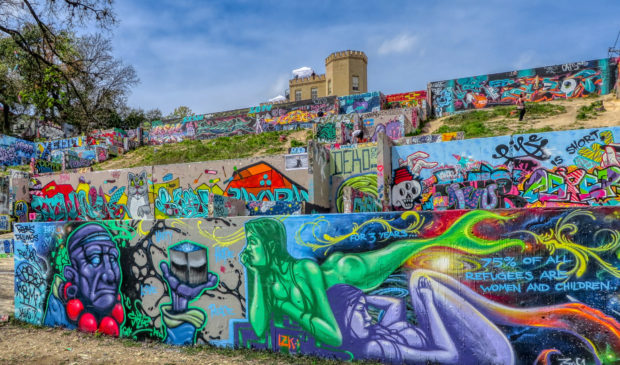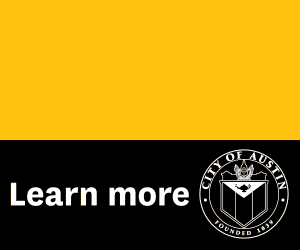Downtown Commission votes to form graffiti working group
Tuesday, February 7, 2023 by
Ava Garderet At the most recent Downtown Commission meeting on Jan. 18, members agreed to form a working group to address what Chair August Harris deemed a “rapid increase in graffiti around our community.”
During a sprawling discussion of the topic, commissioners debated the negative effects of graffiti, the actors and reasons behind why it exists, and how a working group would approach its removal.
Commissioner Mike Lavigne commented that, as a small-business owner, the current process the city uses to remove graffiti is tedious and expensive.
“What happens is somebody reports it to the city, the city comes and they cite the business, and then the business has to get rid of it under a certain amount of time, otherwise you get some sort of fine,” Lavigne said.
A city spokesperson told the Austin Monitor that, while city ordinance does require property owners to get rid of graffiti within 30 days, the city does not levy fines for unremoved graffiti. But the problem remains a costly one, not only to private businesses, but to city departments as well.
Harris cited data reporting that graffiti removal costs our nation up to $12 billion in cleanup expenses every year. On a local level, each department has to deal with graffiti tagging on its designated properties.
In addition, the city’s abatement program has a hefty price tag of its own.
“Parks and Recreation has four staff members and $500,000 of their budget goes to graffiti abatement every year in the parks,” Harris said. “That’s $500,000 that could be spent on other things in our parks that are desperately needed.”
During the discussion, there was also some debate over whether graffiti should be considered a “gateway crime,” as Harris put it. Commissioner Nelly Paulina Ramirez, while recognizing that graffiti is a nuisance, strongly disagreed that it breeds more crime.
“I think that’s a misnomer and a scare tactic,” she said.
Commissioner David Gomez raised the idea that graffiti is sometimes a way for people to express themselves when they might not have other means to do so.
“Sometimes people just want to be heard,” Gomez said. “And if we can provide an opportunity for them to be heard, then we can take their message and figure out what they are saying, what they want, who they want to say it to … it’’ll reduce (graffiti).”
As a preview into what the working group could tackle, commissioners gave examples of what such opportunities could look like.
Gomez noted that various restaurants put chalkboards in their bathrooms so that people can express their messages and art in a way that can be erased and replaced by the next guest.
Lavigne referenced a 2021 event held at Episcopal Church of the Resurrection, where student artists were invited to graffiti the entire retaining wall surrounding the church. Lavigne liked the idea of finding more “diversionary and proactive” solutions like this to prevent graffiti.
Commissioner Scott Strickland expressed his opinion that the working group should “tread lightly,” and emphasized the importance of including artists in the conversation, rather than looking at graffiti as just a problem to eradicate.
He suggested that relying solely on data and taking a zero-tolerance approach of removing as much graffiti as possible might actually fuel its makers to create more graffiti in resistance.
“It would basically be compounding the issue, and it would be right before South by Southwest,” he said, noting the importance of “taking away some of the crime – trespassing, painting highway signs – but also giving them a place to share their work and thrive in that too.”
Lavigne agreed that “the more you include the art community in that discussion, the more effective the solution is gonna be.”
The commission will come up with some recommendations and submit any potential budget recommendations to City Council by the end of March.
With all of these considerations, the motion to adopt the resolution to form a working group passed with a 12-0 vote, with commissioners Preston Reine, Josh Lickteig, Jen Weaver, Kimberly Taylor, and Cynthia Weatherby absent, and Ben Heimsath a non-voting member.
Photo of the former Castle Hill Graffiti Park by Randy von Liski made available through a Creative Commons license. This story has been changed to correct the reference to a graffiti event that was held at Episcopal Church of the Resurrection, not St. David’s, as was originally reported.
The Austin Monitor’s work is made possible by donations from the community. Though our reporting covers donors from time to time, we are careful to keep business and editorial efforts separate while maintaining transparency. A complete list of donors is available here, and our code of ethics is explained here.
You're a community leader
And we’re honored you look to us for serious, in-depth news. You know a strong community needs local and dedicated watchdog reporting. We’re here for you and that won’t change. Now will you take the powerful next step and support our nonprofit news organization?









